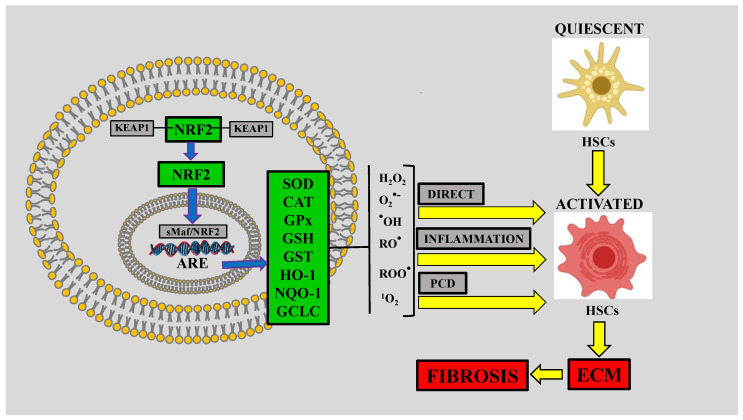Figure 2.
The nuclear factor-E2-related factor-2 (NRF2) pathway exerts antifibrotic effects. Reactive oxygen species (ROS), including hydrogen peroxide (H2O2), superoxide anion (O2●−), hydroxyl radical (●OH), alkoxyl radical (RO●), peroxyl radical (ROO●), and singlet oxygen (1O2), can activate hepatic stellate cells (HSCs) directly or by triggering inflammation or programmed cell death (PCD). In turn, activated HSCs produce large amounts of extracellular matrix (ECM) proteins that are conducive to fibrosis. Cells can regulate ROS by inducing the endogenous NRF2 antioxidant system. Inactive NRF2 is bound to the primary oxidative-stress-sensor and cytoskeleton-binding protein Kelch-like erythroid cap-n-collar (CNC) homolog-associated protein 1 (KEAP1) in the cytoplasm. Activated NRF2 is liberated from KEAP1; in turn, free NRF2 translocates to the nucleus and dimerizes with one of the small Maf (sMaf) proteins and binds to the antioxidant response element (ARE), upregulating antioxidant genes, including superoxide dismutase (SOD), catalase (CAT), glutathione peroxidase (GPx), reduced glutathione (GSH), heme oxygenase-1 (HO-1), NAD(P)H dehydrogenase (quinone 1) (NQO-1), and glutamate-cysteine ligase catalytic subunit (GCLC), which are effective in decreasing ROS; therefore, the NRF2 signaling pathway exerts an indirect antifibrotic effect.

